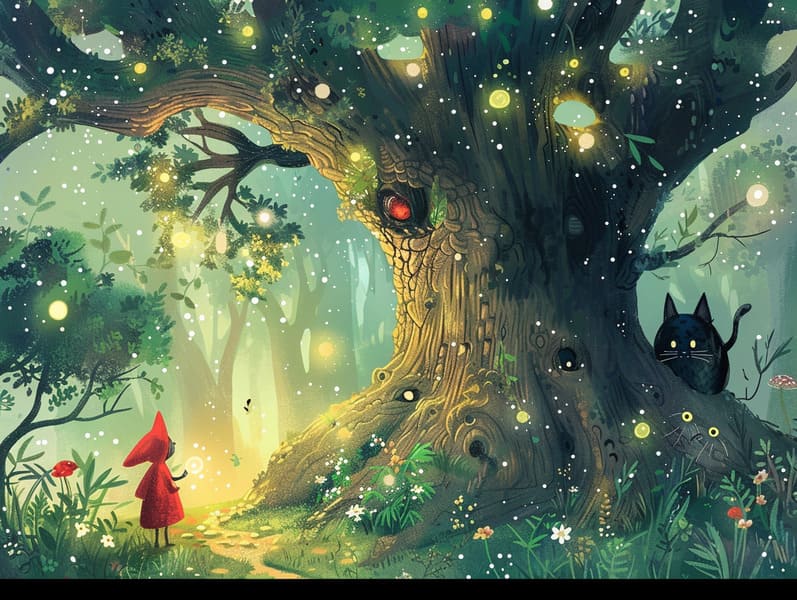Tracing the Heritage of Classic Fairy Tales and Its Consistent Captivation.

Ancient fairy tales have enduring presence. These narratives have been told from one generation to the next ages before they were ever published. They sprang from a variety of traditions, including Eastern traditions. They were initially passed along among grown-ups, often carrying themes and messages reflective of the societal norms and beliefs of the time.
The famous Grimm duo, the two Grimm brothers, were among the first to gather many of these beloved stories. Their volume, "Grimm's Story Collection," included classics like "The Little Glass Slipper," "The Story of Hansel and Gretel," and "Snow White," which have since become essentials in the world of children's fairy tales. Similarly, Hans Andersen's fanciful tales, such as "The Sea Maid," and "The Story of the Ugly Duckling," have enchanted hearts worldwide, ensuring their place in the pantheon of beloved fairy tales.
Though they are old, these stories remain as pertinent as ever, especially as kids' bedtime tales. These enchanting tales are now available in multiple formats, including gorgeously illustrated books, charming animations, and online fairy tales.
Their lasting presence can be traced to several charming aspects:
Important Morals: Timeless fairy tales often provide important moral lessons. Narratives like "The Boy Who Cried Wolf" teach the significance of honesty, while "The Hare and the Tortoise" underline the values of resolve and modesty. These stories offer young readers clear distinctions between moral and immoral, developing their moral compass in a kind yet impactful way.
Compassion and Knowledge: Ancient fairy tales frequently illustrate beings facing obstacles and hardships, urging audiences to sympathize with their struggles and encourage their triumphs. For instance, "Beauty and Her Beast" illustrates the necessity of appreciating inner worth to comprehend the real character of a person, promoting compassion and perception.
Cultural Awareness: Many traditional fairy tales are interwoven with the cultural contexts from which they came. Exploring these fairy tales can provide informative snapshots into different societies, building a sense of cultural awareness and recognition.
Imagination and Innovation: The fantastical elements in old fairy tales—enchanted lands—promote children’s dreaming abilities. These narratives take readers to imaginary realms, triggering innovative thinking and a sense of mystery that endures a lifetime.
Ancient fairy tales are not only alluring but also edifying. They serve as entrancing tools in promoting various cognitive and emotional skills in the young. When fairy tales are read aloud, they develop communication skills by introducing new terms and sophisticated sentence structures. This practice also strengthens listening abilities and concentration, as little ones keep up with the story, anxious to see what happens next.
Furthermore, analyzing the themes and characters of timeless fairy tales can promote problem-solving abilities and reasoning skills. Young ones are instructed to identify patterns, guess what will happen, and comprehend cause and effect. These examinations also boost young ones say their thoughts and feelings, contributing to their emotional intelligence.
In today’s electronic age, the presence of digital fairy tales has made these tales more acquirable than ever. Internet resources and software offer vast collections of children's fairy tales that can be enjoyed or listened on anytime, anywhere. Fairy tales voiced are particularly popular, offering an captivating way for little ones to experience these enchanting tales. Audio stories and voiced videos carry characters and settings to life, often accompanied by entrancing music and instrumentals that improve the story adventure.
The lasting allure of classic fairy tales lies in their ability to adjust to changing times while keeping their essential themes. Contemporary versions of these fairy tales often integrate more different protagonists and modern settings, making them relatable to today’s audience. However, the central morals of courage, compassion, and impartiality remain unchanged, continuing to influence listeners of all ages.
Fairy tales also offer a sense of contentment and knowability. They deliver up a coherent narrative with a distinct beginning, this site middle, and end, often closing with the resolution of conflicts and the triumph of goodness over badness. This foreseeability can be placating for children, offering a sense of steadfastness in an inconstant world.
Traditional fairy tales continue to allure and guide new generations, maintaining their magic and relevance in modern society. As bedtime stories for kids, they extend a perfect blend of delight and instruction, boosting moral values, empathy, and creativity. The presence of online storybooks and the in demand status of fairy tales narrated confirm that these old fairy tales remain obtainable to new generations.
By protecting and conveying these stories, we continue to admire the rich tapestry of legends and cultural heritage. Whether you are enjoying a richly illustrated book, viewing a internet library, or hearing an spoken story, the attraction of Grimm's fairy tales is always within reach. These fairy tales convey of the consistent effect of stories and its ability to gather us across time and space.
No matter if you are exploring a vibrantly illustrated book, experiencing a web-based library, or hearing an voice book, the elegance of traditional fairy tales is always within reach.
These stories convey of the ageless ability of narratives and its ability to bind us across generations and cultures, making a tie that fascinates and enlightens alike.